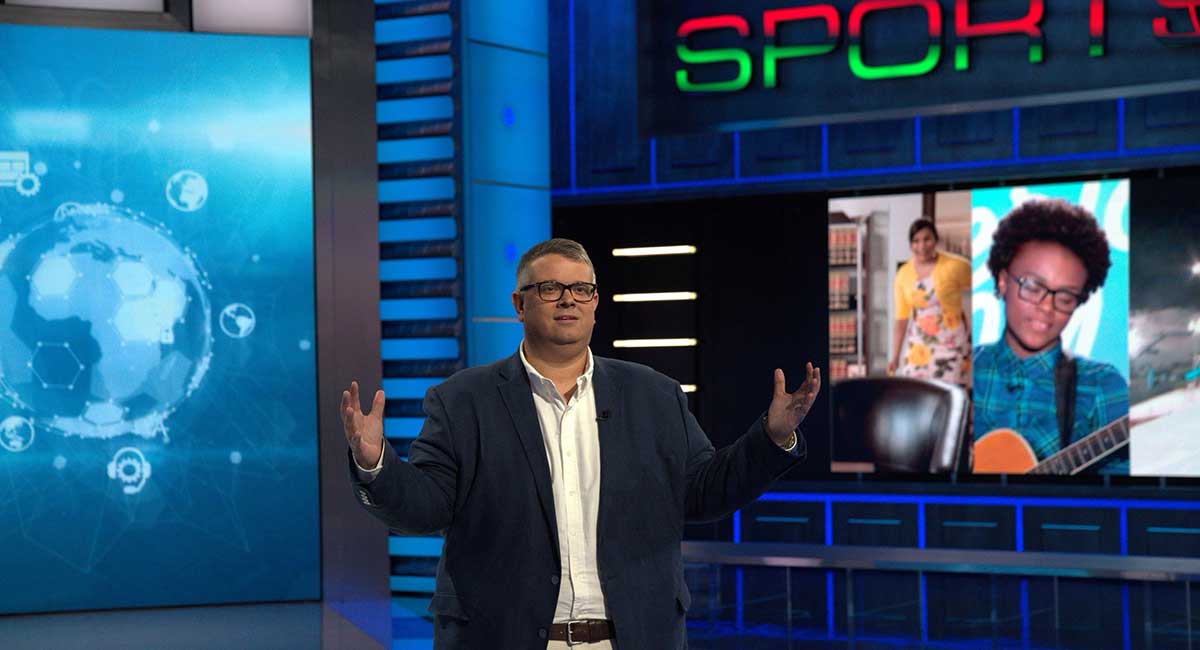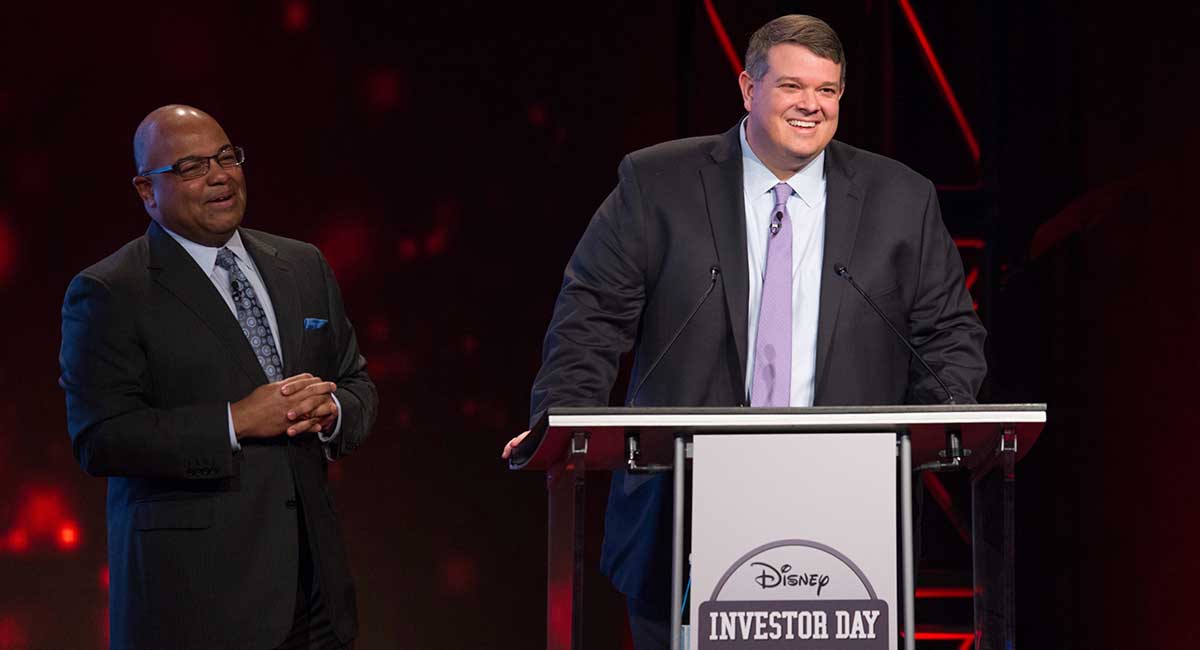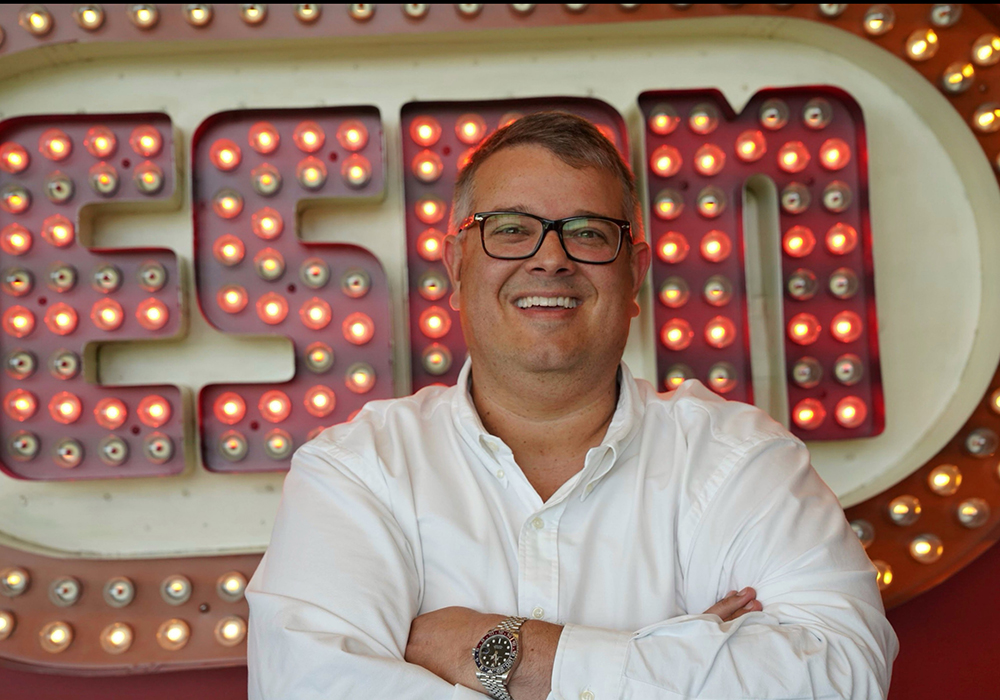Aaron LaBerge would climb out of his bed in the University of South Carolina’s Towers residence hall each morning and head to the 7-Eleven across South Main Street before making his way to the computer lab in the Swearingen Engineering Building.
He had no smart phone, laptop or Wi-Fi, so the lab was the only place on campus in the mid-1990s to access high-speed internet. For a curious, tech-savvy kid like LaBerge, connection was key.
“If you wanted to get online to build a network-based program, you had to be in the lab,” LaBerge says. “I spent hours there with others who were also consumed with the emerging technology. It was a big piece of my college experience.”
Thanks to those early technological and social connections, the Charleston native earned his bachelor’s degree in electrical and computer engineering from USC in 1996 before embarking on a tech career that would ultimately lead him to a sports Emmy and the C-suite at The Walt Disney Company.
Learning the language
LaBerge’s interest in computer engineering was born out of a love for “making things talk to each other.”
“I always knew I wanted to be an engineer,” LaBerge says. “My father always had the latest computer or video game system, and I was inquisitive. When the first web browser came out in 1994, I wanted to learn everything I could about how the internet worked.”
That desire to learn led to LaBerge to create one of the first USC student web pages — linking him to a global community. It also snagged him an internship and full-time job with Columbia-based web developer Renaissance Interactive.
At Renaissance, he was introduced to Java, a programming language developed in 1995 that quickly gained traction in the tech world. He was hooked and immediately developed a fascination with writing code that allowed consumer electronic devices to communicate with each other.
I did everything I could to go work there,” LaBerge says. “I sent email after email with my resume and cover letter.
Not long after, an article in Wired magazine about Starwave Entertainment caught his eye. Run by one of the original Java creators, the Seattle-based company produced some of Disney’s earliest internet ventures, such as ESPN.com and ABCNews.com.
“I did everything I could to go work there,” LaBerge says. “I sent email after email with my resume and cover letter. I didn’t even know where Starwave was, but I knew I needed to be there. They were shaping the internet’s future.”
Starwave’s CEO at the time was well-known venture capitalist Mike Slade. He remembers LaBerge being hired as a software engineer in 1997 to work on ESPN products.
“The internet was new, and everything we did was made from scratch,” Slade says. “We did it all on Java and would only hire guys who were good at Java. Aaron was one of those guys, but the difference is that he wanted to be more than just a programmer. From Day One, he was special because he had this unbelievable enthusiasm.”
A touch of magic
Disney acquired Starwave in 1998, and LaBerge rose through the ranks on the ESPN side, playing an integral role in the growth of their digital media products.
“Aaron became one of my inside circle of folks that I relied upon to transform Sportszone.net to ESPN.com,” said former ESPN President John Skipper. “He is a very bright human being and has one spectacular skill that I’ve never seen more manifested in a single person. He intimately understands technology and can explain what it means and why it matters to someone who doesn’t.”

In 2007, LaBerge left ESPN to start Fanzter, Inc., a consumer software and digital product development company funded by Slade. LaBerge rejoined ESPN in 2013 as the senior vice president for technology and product development and was promoted to executive vice president and chief technology officer in 2015.
LaBerge refers to his path to corporate leadership as serendipity. “Hard work matters, but a lot of it is being in the right place at the right time,” he says.
But Skipper and Slade, who have been mentors to LaBerge throughout his career, say otherwise, crediting his success to his ability to build connections.
“Technologists tend to be more individual-oriented, but Aaron is a fabulous manager,” Skipper says. “He has emotional intelligence in huge quantities and is extraordinarily sensitive to people’s feelings. He only tries to help people get better at what they do.”
Slade adds, “Aaron just has this can-do attitude. In a giant company like Disney, it’s hard to manage innovation. A big company has so many rules that can get in the way, but he has the right attitude about working in that environment. I find that infectious enthusiasm is what makes great tech leaders.”
Staying connected
At Disney, LaBerge’s team consists of more than 8,000 employees who are responsible for the design, development, engineering and deployment of more than 90 consumer-facing streaming and digital products. Essentially, they create connections between users and Disney+, Hulu, ESPN, ABC, National Geographic and Marvel.
LaBerge says his work is influenced by many of the foundational elements of computer engineering he learned at Carolina. One of his most memorable experiences is the top gun car race, which is still held today. It requires student teams to design a car that moves around a track autonomously, with the goal of achieving the fastest laps to win the highest grade.

“These were some of the foundational pieces that taught us to think about problems and how to technically solve them,” LaBerge says. “You put a group of electrical, computer and mechanical engineering students on the same team, and they have to figure out how to make it work. Collaborating with different disciplines and applying how they think about problems is how you build a product that can perform.”
Although computer technology has changed significantly since LaBerge attended the university, he is a self-proclaimed student of the game who has stayed true to the inquisitive nature he possessed as a child.
“One of the keys to success is continually learning and staying curious about what’s new. It’s part of why I wanted to be an engineer,” LaBerge says. “When you get to apply that, and millions of people benefit from what you build, it pushes you to stay out front and continue to build products people love. That is what’s so magical about Disney — being able to bring your ideas to life and positively touch the lives of millions around the world.”
